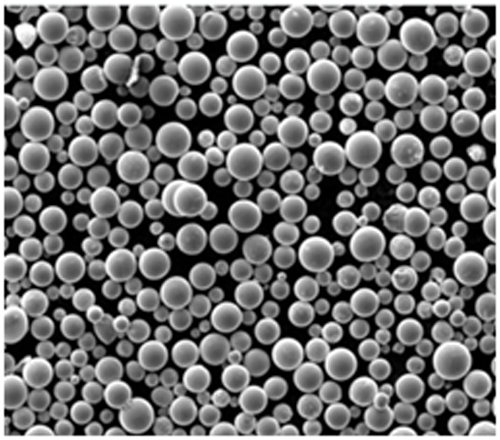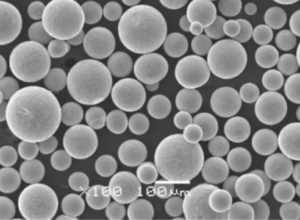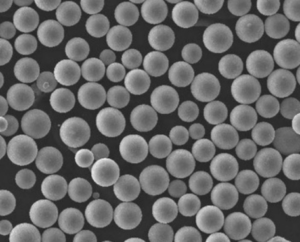Gaz türbinleri, elektrik üretiminden jet motorlarına kadar her şeyi çalıştıran modern mühendisliğin harikalarıdır. Bu sistemlerin kritik bir bileşeni, yakıtı yanma odasına ince bir şekilde dağıtarak verimli yanmayı sağlayan atomize hava sistemidir. Bu makale, gaz türbini atomize hava sistemlerininbileşimini, özelliklerini, uygulamalarını, özelliklerini ve daha fazlasını inceleyerek, bunların karmaşıklıklarına derinlemesine inmektedir. İster bir mühendis, ister bir öğrenci, ister sadece bir meraklı olun, bu kılavuz size bu büyüleyici konu hakkında ayrıntılı bilgiler sağlayacaktır.
Gaz Türbini Atomize Hava Sistemine Genel Bakış
Bir gaz türbini atomize hava sistemi, yakıtı ince damlacıklara atomize ederek yanma sürecini geliştirmek için tasarlanmıştır. Bu, daha verimli ve eksiksiz bir yanma sağlayarak daha iyi performans, daha düşük emisyonlar ve iyileştirilmiş yakıt ekonomisi sağlar. Sistem, yakıtı küçük parçacıklara ayırmak için basınçlı hava kullanır ve bu da yanma odasındaki hava ile daha etkili bir karışım sağlar.
Atomize Hava Sisteminin Temel İşlevleri
- Yakıt Yanmasını İyileştirir: Sistem, ince bir yakıt sisi oluşturarak, yakıtın daha eksiksiz yanmasını sağlar.
- Emisyonları Azaltır: Daha iyi yanma, NOx ve CO gibi kirletici maddelerin daha düşük seviyelerine yol açar.
- Verimliliği Artırır: Daha eksiksiz yanma, yakıttan daha fazla enerji çekildiği anlamına gelir ve genel verimliliği artırır.
- Motor Ömrünü Uzatır: Verimli yanma, motor bileşenlerini aşındırabilen karbon birikintilerinin oluşumunu azaltır.

Gaz Türbini Atomize Hava Sisteminin Bileşimi
Atomize hava sistemi, her biri atomizasyon sürecinde hayati bir rol oynayan birkaç temel bileşenden oluşur. Temel parçaları inceleyelim:
- Hava Kompresörü: Atomizasyon için gerekli olan yüksek basınçlı havayı sağlar.
- Yakıt Nozülü: Yakıt ve havanın karıştığı ve atomizasyonun gerçekleştiği cihaz.
- Hava Manifoldu: Basınçlı havayı yakıt nozüllerine eşit olarak dağıtır.
- Kontrol Vanaları: Optimum karışım ve yanmayı sağlamak için hava ve yakıt akışını düzenler.
Bileşenlerin Ayrıntılı Tablosu
| Bileşen | Açıklama | Malzeme | Fonksiyon |
|---|---|---|---|
| Hava Kompresörü | Havayı yüksek basınca sıkıştırır | Paslanmaz Çelik | Atomizasyon için yüksek basınçlı hava sağlar |
| Yakıt Nozülü | Hava ve yakıtı karıştırır, yakıtı atomize eder | Inconel, Titanyum | Verimli yanma için ince yakıt sisi sağlar |
| Hava Manifoldu | Havayı nozüllere eşit olarak dağıtır | Alüminyum, Çelik | Üniform hava dağılımı |
| Kontrol Vanaları | Hava ve yakıt akışını düzenler | Pirinç, Paslanmaz | Optimum hava-yakıt karışımını korur |
Özellikleri Gaz Türbini Atomize Hava Sistemi
Atomize hava sisteminin özelliklerini anlamak, performansını optimize etmek için çok önemlidir. İşte bazı temel özellikler:
- Basınç ve Akış Hızları: Sistem, etkili atomizasyon sağlamak için yüksek basınç ve akış hızlarında çalışır.
- Malzeme Dayanıklılığı: Bileşenler, aşırı sıcaklıklara ve basınçlara dayanabilmek için yüksek mukavemetli malzemelerden yapılmıştır.
- Hassas Kontrol: Gelişmiş kontrol sistemleri, hava-yakıt karışımını yüksek hassasiyetle düzenler.
Performans Özellikleri Tablosu
| Karakteristik | Açıklama | Önem |
|---|---|---|
| Basınç Aralığı | Tipik olarak 20-100 psi arasında | Uygun atomizasyon sağlar |
| Akış Hızı | Motor boyutuna ve tasarımına göre değişir | Yakıt beslemesini motor talepleriyle eşleştirir |
| Malzeme Mukavemeti | Yüksek sıcaklığa ve basınca dayanıklı | Uzun ömür ve güvenilirlik |
| Kontrol Hassasiyeti | Hava-yakıt oranını düzenlemede yüksek doğruluk | Yanma verimliliğini optimize eder |
Gaz Türbini Atomize Hava Sisteminin Uygulamaları
Gaz türbini atomize hava sistemlerinin uygulamaları, çeşitli endüstrilerde geniş bir yelpazeye yayılmıştır. İşte bu sistemlerin yaygın olarak kullanıldığı yerlere bir bakış:
Uygulama Alanları
| Endüstri | Uygulama | Avantajlar |
|---|---|---|
| Enerji Üretimi | Gaz türbinli enerji santralleri | İyileştirilmiş verimlilik, daha düşük emisyonlar |
| Havacılık | Jet motorları | Daha iyi yakıt ekonomisi, azaltılmış emisyonlar |
| Petrol ve Gaz | Açık deniz platformları, sondaj kuleleri | Güvenilir güç, verimli yanma |
| Denizcilik | Gemi itme sistemleri | Geliştirilmiş yakıt verimliliği, azaltılmış kirlilik |
| Endüstriyel | Kombine ısı ve güç sistemleri (CHP), imalat | Maliyet tasarrufu, daha iyi enerji kullanımı |
Gaz Türbini Atomize Hava Sisteminin Özellikleri
Özellikler söz konusu olduğunda, farklı gaz türbini atomize hava sistemleri, tasarımlarına ve amaçlanan uygulamalarına göre değişiklik gösterir. İşte özelliklere ayrıntılı bir bakış:
Teknik Özellikler Tablosu
| Şartname | Detaylar | Standart |
|---|---|---|
| Çalışma Basıncı | 20-100 psi | ASME, ISO |
| Hava Akış Hızı | Değişir (örneğin, 10-1000 CFM) | OEM standartları |
| Malzeme | Paslanmaz Çelik, Inconel, Titanyum | ASTM, SAE |
| Kontrol Sistemi | Elektronik, Pnömatik | IEC, ANSI |
| Nozül Orifis Boyutu | 0,2-1,0 mm | OEM standartları |
Tedarikçiler ve Fiyatlandırma Detayları
İçin bileşen tedarik ederken gaz türbini atomize hava sistemlerinin, tedarikçileri ve fiyatlandırmalarını dikkate almak esastır. İşte bazı önemli tedarikçilerin karşılaştırması:
Tedarikçiler ve Fiyatlandırma Tablosu
| Tedarikçi | Bileşen | Fiyat Aralığı | Konum | Teslim Süresi |
|---|---|---|---|---|
| ABC Kompresörleri | Hava Kompresörü | $5,000 – $20,000 | ABD | 4-6 hafta |
| XYZ Nozülleri | Yakıt Nozülü | $1,000 – $5,000 | Almanya | 6-8 hafta |
| LMN Manifoldları | Hava Manifoldu | $2,000 – $8,000 | Çin | 3-5 hafta |
| DEF Kontrolleri | Kontrol Vanaları | $500 – $3,000 | Japonya | 2-4 hafta |
Farklı Sistemlerin Artıları ve Eksilerini Karşılaştırmak
Farklı gaz türbini atomize hava sistemlerinin kendine özgü avantajları ve sınırlamaları vardır. Artıları ve eksilerini anlamanıza yardımcı olacak bir karşılaştırma:
Avantajlar ve Sınırlamalar Tablosu
| Sistem Tipi | Avantajlar | Sınırlamalar |
|---|---|---|
| Yüksek Basınçlı Sistemler | Daha iyi atomizasyon, verimli yanma | Daha yüksek maliyet, daha karmaşık bakım |
| Düşük Basınçlı Sistemler | Daha basit tasarım, daha düşük maliyet | Daha az verimli atomizasyon, daha yüksek emisyonlar |
| Elektronik Kontrol Sistemleri | Hassas kontrol, daha iyi performans | Daha yüksek ilk yatırım, karmaşık onarımlar |
| Pnömatik Kontrol Sistemleri | Daha basit çalışma, güvenilir | Daha az hassas kontrol, daha az verimli olabilir |
Spesifik Metal Tozu Modelleri için Gaz Türbini Atomize Hava Sistemi
Metal tozları, yüksek mukavemetleri ve aşırı koşullara karşı dirençleri nedeniyle genellikle gaz türbini atomize hava sistemlerinin çeşitli bileşenlerinde kullanılır. İşte on adet özel metal tozu modeli ve açıklamaları:
Metal Toz Modelleri
- Inconel 718 Toz
- Açıklama: Yüksek mukavemetli, korozyona dayanıklı nikel-krom alaşımı.
- Uygulamalar: Yakıt nozülleri, türbin kanatları.
- Ti-6Al-4V Tozu
- Açıklama: Mükemmel mukavemet-ağırlık oranına sahip titanyum alaşımı.
- Uygulamalar: Kompresör kanatları, kasalar.
- Paslanmaz Çelik 316L Toz
- Açıklama: İyi mekanik özelliklere sahip korozyona dayanıklı çelik.
- Uygulamalar: Hava manifoldları, kontrol vanaları.
- Hastelloy X Toz
- Açıklama: Yüksek oksidasyon direncine sahip nikel bazlı alaşım.
- Uygulamalar: Yanma astarları, türbin diskleri.
- Kobalt Krom (CoCr) Tozu
- Açıklama: Yüksek aşınma ve korozyon direnci.
- Uygulamalar: Türbin kanatları, yanma odaları.
- Alüminyum 7075 Tozu
- Açıklama: Yüksek mukavemetli alüminyum alaşımı.
- Uygulamalar: Hava manifoldları, yapısal bileşenler.
- Inconel 625 Toz
- Açıklama: Korozyona ve oksidasyona dayanıklı nikel alaşımı.
- Uygulamalar: Egzoz sistemleri, ısı eşanjörleri.
- Nikel Alaşımı 625 Tozu
- Açıklama: Yüksek mukavemet ve şiddetli ortamlara karşı direnç.
- Uygulamalar: Yakıt nozülleri, türbin kanatları.
- Takım Çeliği H13 Tozu
- Açıklama: Yüksek tokluk ve aşınma direnci.
- Uygulamalar: Yüksek sıcaklık bileşenleri, nozüller.
- Maraging Çelik Tozu
- Açıklama: İyi tokluğa sahip ultra yüksek mukavemet.
- Uygulamalar: Yapısal bileşenler, dişliler.
Metal Tozu Modellerinin Karşılaştırması
| Model | Güç | Korozyon Direnci | Sıcaklık Dayanımı | Uygulamalar |
|---|---|---|---|---|
| Inconel 718 | Yüksek | Yüksek | Çok Yüksek | Yakıt nozülleri, türbin kanatları |
| Ti-6Al-4V | Orta düzeyde | Orta düzeyde | Yüksek | Kompresör kanatları, kasalar |
| Paslanmaz Çelik 316L | Orta düzeyde | Yüksek | Orta düzeyde | Hava manifoldları, kontrol vanaları |
| Hastelloy X | Yüksek | Çok Yüksek | Çok Yüksek | Yanma astarları, türbin diskleri |
| CoCr | Orta düzeyde | Çok Yüksek | Yüksek | Türbin kanatları, yanma odaları |
| Alüminyum 7075 | Yüksek | Düşük | Düşük | Hava manifoldları, yapısal bileşenler |
| Inconel 625 | Yüksek | Çok Yüksek | Çok Yüksek | Egzoz sistemleri, ısı eşanjörleri |
| Nikel Alaşım 625 | Yüksek | Yüksek | Çok Yüksek | Yakıt nozülleri, türbin kanatları |
| Takım Çeliği H13 | Çok Yüksek | Düşük | Yüksek | Yüksek sıcaklık bileşenleri, nozüller |
| Maraging Çelik | Çok Yüksek | Orta düzeyde | Orta düzeyde | Yapısal bileşenler, dişliler |
SSS
Soru 1: Gaz türbinlerinde bir atomize hava sisteminin birincil amacı nedir?
Birincil amaç, yakıtı ince damlacıklara ayırarak, hava ile verimli karışım ve tam yanma sağlayarak yakıt yanmasını iyileştirmektir.
Soru 2: Gaz türbini atomize hava sistemlerinde yaygın olarak hangi malzemeler kullanılır?
Yaygın malzemeler arasında paslanmaz çelik, Inconel, titanyum, alüminyum ve aşırı koşullara dayanmak için çeşitli yüksek mukavemetli alaşımlar bulunur.
Soru 3: Bir atomize hava sistemi emisyonları nasıl azaltır?
Sistem, daha eksiksiz yanma sağlayarak, yanmamış yakıt miktarını azaltır ve NOx ve CO gibi kirletici maddelerin üretimini azaltır.
Soru 4: Atomize hava sistemleri her tür gaz türbininde kullanılabilir mi?
Evet, atomize hava sistemleri çok yönlüdür ve farklı endüstrilerdeki çeşitli gaz türbinlerinde kullanıma uyarlanabilir.
Soru 5: Bir atomize hava sisteminin performansını etkileyen ana faktörler nelerdir?
Temel faktörler arasında hava basıncı, akış hızları, kontrol sistemlerinin hassasiyeti ve bileşenlerde kullanılan malzemelerin kalitesi yer alır.
S6: Bir atomize hava sisteminde bakım ne sıklıkla yapılmalıdır?
Düzenli bakım esastır ve üretici önerilerine göre, tipik olarak her birkaç ayda bir, optimum performansı sağlamak için yapılmalıdır.
S7: Yüksek basınçlı bir atomize hava sistemi kurmanın maliyet etkileri nelerdir?
Yüksek basınçlı sistemler, karmaşıklıkları ve gerekli yüksek kaliteli malzemeler nedeniyle genellikle daha
S8: Gaz türbinlerinde atomize hava sistemlerinin kullanılmasının çevresel faydaları var mı?
Evet, geliştirilmiş yanma verimliliği daha düşük zararlı kirletici emisyonlarına yol açarak çevresel etkinin azaltılmasına katkıda bulunur.
S9: Atomize hava sistemleri teknolojisinde ne gibi ilerlemeler kaydediliyor?
Devam eden araştırmalar, kontrol sistemlerinin iyileştirilmesine, daha yüksek dayanıklılık için yeni malzemelerin geliştirilmesine ve genel verimliliğin ve emisyon azaltımlarının artırılmasına odaklanmaktadır.
S10: Atomize hava sistemlerinde elektronik kontrol sistemleri pnömatik kontrol sistemlerine kıyasla nasıldır?
Elektronik sistemler daha hassas kontrol ve daha iyi performans sunar, ancak daha basit ve daha güvenilir olan pnömatik sistemlere kıyasla genellikle daha pahalı ve karmaşıktır.
Sonuç
Gaz türbini atomize hava sistemleri çeşitli endüstriyel uygulamalarda verimli ve temiz yanma için kritik öneme sahiptir. Bileşenlerini, özelliklerini, uygulamalarını ve kullanılan farklı metal tozlarının özelliklerini anlayarak, bu sistemlerin karmaşıklığını ve önemini takdir edebilirsiniz. Teknoloji ilerledikçe, bu sistemler daha da fazla verimlilik ve daha düşük çevresel etki sunarak gelişmeye devam edecektir. İster gaz türbinlerinin tasarımı, bakımı ile ilgileniyor olun, ister sadece gaz türbinleri hakkında bilgi ediniyor olun, bu kapsamlı kılavuz atomize hava sistemlerinin büyüleyici dünyasına dair değerli bilgiler sunmaktadır.

